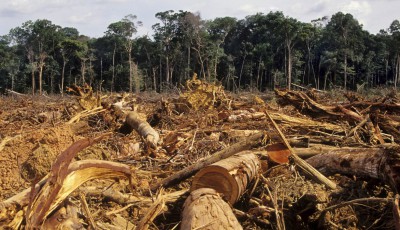Rainfall patterns cloud climate changes
By Alex Kirby
LONDON, 7 April, 2016 – The 20th century was neither much drier nor wetter for half the globe than many of its predecessors, European scientists say. On the contrary, they say several centuries in the last 1,200 years experienced much more variable rain and drought than the 1900s.
Their findings, which are published with several caveats and which have not so far been replicated, differ markedly from the conclusions published by the Intergovernmental Panel on Climate Change (IPCC).
In what they say is the first 1,200-year record of water availability, rainfall and drought across Europe, North Asia and North America, the researchers from Sweden, Germany and Switzerland found that climate models overestimate the increase in wet and dry extremes as temperatures rose during the 20th century.
Their research published in Nature journal allows scientists to see accurately for the first time how rainfall patterns changed during the 20th century compared with the last 12 centuries. It shows the northern hemisphere experienced much larger variations in rainfall and drought patterns during the time from 800 AD than in the 20th century.
Warmer world
The scientists say the new results − a contribution to the Past Global Changes (PAGES) 2k Network − can help improve how climate models represent future rainfall changes in a warmer world.
What will happen to rainfall and drought when temperatures rise across the globe is a preoccupation for climate scientists and policymakers, as it will affect water resources, crop yields and ecological change.
On the basis of climate model simulations, the IPCC says wet areas are likely to get wetter and dry areas drier in a warmer world. It cannot comment on the substance of an individual paper or press release, but says that if any relevant new research is published it can consider it in its future assessments.
But the European team of researchers challenges the conclusions of the IPCC’s climate models. Its results show that the temperature rise last century – which is not disputed – may not have affected the hydroclimate (rainfall and drought-related climate anomalies) as much as earlier thought.
The lead author, Fredrik Charpentier Ljungqvist, a historian and climate researcher at Stockholm University, says: “Despite strong 20th-century warming, we find that rainfall and drought extremes in the 20th century have varied within the natural variability we can now see in earlier centuries.
“Several other centuries in the past 1,200 years show stronger and more widespread extremes and deviations from the average. Climate models strongly overestimate the intensification of wet and dry extremes in the 20th century.”
The team used tree-rings, lake sediment, historical data and other types of archive material to produce their new picture of past climate. They found larger land areas with relatively wetter conditions in the 9th to 11th centuries and the 20th century. But drier conditions than during the 20th century were more widespread between the 12th and 19th centuries.
“The lack of agreement between the reconstruction and the climate models in the 20th century indicates that the models can have limitations in realistically predicting which regions may get wetter and which may get drier in a warmer world,” Dr Ljungqvist says.
Climate predictions
“But one reason climate model predictions do not agree well with actual data could also be that 20th century warming may not yet have been strong enough to trigger large-scale hydroclimate changes.”
To investigate the links between temperature and hydroclimate variations, the scientists compared their reconstructed variations with a new temperature reconstruction they had also developed.
They conclude that only in a few regions is it possible to see clear correlations between changes in temperature and hydroclimate. For instance, drought was most widespread during both the relatively warm 12th century and the relatively cold 15th century.
“The study shows the importance of placing recent hydroclimate changes in a millennium-long perspective,” Dr Ljungqvist says.
“Actual measurements of precipitation and drought are too short to tell if the observed changes today fall outside the range of natural variability. Instrumental measurements are also too short to test the ability of state-of-the-art climate models to predict which regions will get drier or wetter with global warming.” – Climate News Network







